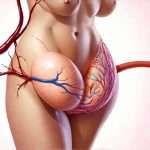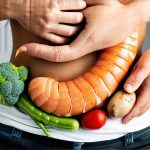Transitioning to a grain-free diet can be a significant lifestyle change, often undertaken with hopes of improved energy levels, reduced inflammation, or better digestive health. Many individuals find success and experience positive outcomes after making this switch; however, it’s surprisingly common to encounter temporary setbacks, especially concerning bowel regularity. While the long-term goal is typically enhanced digestion, the initial phase can sometimes bring about constipation – a frustrating experience that can leave people questioning their dietary choices. Understanding why this happens, and how to navigate it effectively, is crucial for sticking with the diet and reaping its potential benefits.
The digestive system is remarkably adaptable but also sensitive to change. Suddenly removing a food group that comprised a significant portion of someone’s diet – like grains – can disrupt established routines within the gut. Grains, even those frequently demonized in certain dietary approaches, often contribute fiber (though not always high-quality), and their removal necessitates finding alternative sources to maintain healthy bowel movements. The shift isn’t just about fiber; it also affects the overall composition of the microbiome, the trillions of bacteria residing in our intestines that play a vital role in digestion and gut motility. This initial disruption can temporarily slow things down, leading to constipation as the system adjusts.
Why Constipation Happens After Going Grain-Free
The primary reason for constipation after eliminating grains is often related to insufficient fiber intake during the transition. Many people rely on grain-based products (bread, pasta, rice) as a major source of fiber in their diet. When these are removed without adequate replacement from other sources, it’s almost inevitable that stool bulk will decrease and transit time through the digestive system will increase. This isn’t necessarily due to grains being superior sources of fiber; rather, it highlights how ingrained they were in the individual’s usual dietary pattern.
However, reduced fiber is not always the sole culprit. Grains also contain resistant starch, a type of carbohydrate that feeds beneficial gut bacteria and promotes regularity. Removing this source can temporarily alter the microbiome composition, potentially reducing the diversity and abundance of these helpful microbes. This microbial shift impacts fermentation processes within the colon – fermentation produces gases and short-chain fatty acids that stimulate bowel movements. Less fermentation could lead to slower motility and increased water absorption, resulting in harder stools.
Furthermore, dehydration frequently exacerbates constipation when starting grain-free. Fiber requires adequate hydration to function properly; without sufficient water intake, fiber can actually worsen constipation by creating a bulky, difficult-to-pass mass in the intestines. Often, individuals focusing on dietary changes forget to simultaneously increase their water consumption, leading to a double whammy effect – reduced fiber from grains and insufficient fluid intake. Proper hydration is absolutely essential when making significant dietary alterations. If you experience discomfort after a heavy meal, consider how to ease digestive symptoms.
Increasing Fiber Intake Strategically
Addressing constipation requires a proactive approach to increasing fiber intake, but it’s not simply about adding any fiber. The type of fiber matters significantly. Soluble fiber dissolves in water, forming a gel-like substance that softens stool and promotes regularity. Insoluble fiber adds bulk to the stool, helping it move through the digestive tract more quickly. A balance of both is ideal, but focusing on soluble fiber initially can be particularly helpful during this transition period.
Here’s how to increase fiber intake strategically:
- Prioritize non-starchy vegetables: Broccoli, spinach, Brussels sprouts, carrots, and zucchini are excellent sources of both soluble and insoluble fiber. Aim for a generous portion with every meal.
- Incorporate fruits rich in pectin: Apples, bananas, berries (especially raspberries), and pears contain pectin, a type of soluble fiber that helps regulate bowel movements.
- Explore alternative grains/seeds: While the goal is grain-free, small amounts of pseudo-grains like quinoa or amaranth can offer some fiber if tolerated – these are botanically seeds, not true grains. Flaxseeds and chia seeds are also excellent sources and can be easily added to smoothies or yogurt (if dairy is consumed).
- Consider a fiber supplement cautiously: If dietary changes aren’t sufficient, a fiber supplement like psyllium husk or methylcellulose might be helpful, but it’s crucial to start with a small dose and increase gradually while monitoring your body’s response. Always drink plenty of water when taking a fiber supplement.
It is important to avoid drastically increasing fiber intake all at once, as this can actually worsen constipation temporarily due to bloating and gas. A gradual increase allows the digestive system time to adapt. Many people experience constipation flare-ups when making changes like these.
Hydration: The Often-Forgotten Component
As previously mentioned, adequate hydration is paramount when transitioning to a grain-free diet, especially if constipation develops. Fiber absorbs water, so without enough fluid intake, fiber can become compacted in the intestines, leading to harder stools and difficulty passing them. Many people underestimate how much water they actually need each day.
A general guideline is to aim for at least eight glasses (64 ounces) of water per day, but this can vary depending on activity level, climate, and individual needs. Pay attention to your body’s signals – thirst is often a late indicator of dehydration. Here are some tips for staying adequately hydrated:
- Carry a reusable water bottle with you throughout the day as a constant reminder to drink.
- Drink water before, during, and after meals.
- Choose hydrating foods like cucumber, watermelon, and celery.
- Limit caffeinated beverages, which can have a diuretic effect (though moderate coffee/tea consumption isn’t necessarily detrimental for everyone).
Gut Microbiome Support During Transition
The gut microbiome plays an integral role in digestion and bowel regularity. When you remove grains from your diet, you’re also altering the food source for your gut bacteria. This disruption can lead to imbalances that contribute to constipation. Supporting the microbiome during this transition is vital for restoring digestive harmony.
- Probiotic-rich foods: Incorporating fermented foods like sauerkraut, kimchi, kefir (if dairy is tolerated), and yogurt (again, if dairy is consumed) can introduce beneficial bacteria into your gut.
- Prebiotic foods: Prebiotics are types of fiber that feed the good bacteria already present in your gut. Onions, garlic, leeks, asparagus, bananas, and oats (although avoiding grains, small amounts may be tolerated by some) are excellent sources of prebiotics.
- Consider a probiotic supplement cautiously: While food sources are often preferable, a high-quality probiotic supplement might be helpful during the transition period to repopulate beneficial bacteria. Consult with a healthcare professional before starting any new supplement regimen. If you’re switching to a low fiber diet, these steps are even more important.
It’s important to remember that constipation after transitioning to a grain-free diet is usually temporary. By focusing on strategic fiber intake, adequate hydration, and gut microbiome support, you can navigate this challenge effectively and enjoy the potential benefits of your dietary change. Patience and consistency are key. If constipation persists for more than two weeks or is accompanied by other concerning symptoms (severe abdominal pain, bloating, nausea), it’s essential to consult with a healthcare professional to rule out any underlying medical conditions. Checkpoints to review can help you stay on top of your digestive health. It’s also worth considering if low variety in daily diet may be contributing to the issue. Finally, remember that changes like this can sometimes lead to issues – a raw food plan has similar challenges.


















